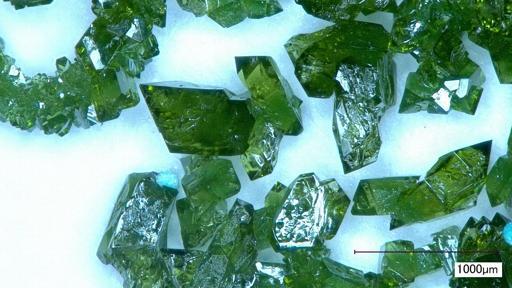
Eine neue Publikation von Prof. Majzlan und Kollegen zeigt, dass der Isotopenaustausch zwischen Wasser und sekundären Mineralen, die sich in Oberflächennähe durch Oxidation und Hydratation aus primären Erzmineralen bilden, die geologische Vergangenheit aufzeichnen kann.
Unterm Mikroskop: Synthetische Kristalle des Minerals Libethenit
Meldung vom: